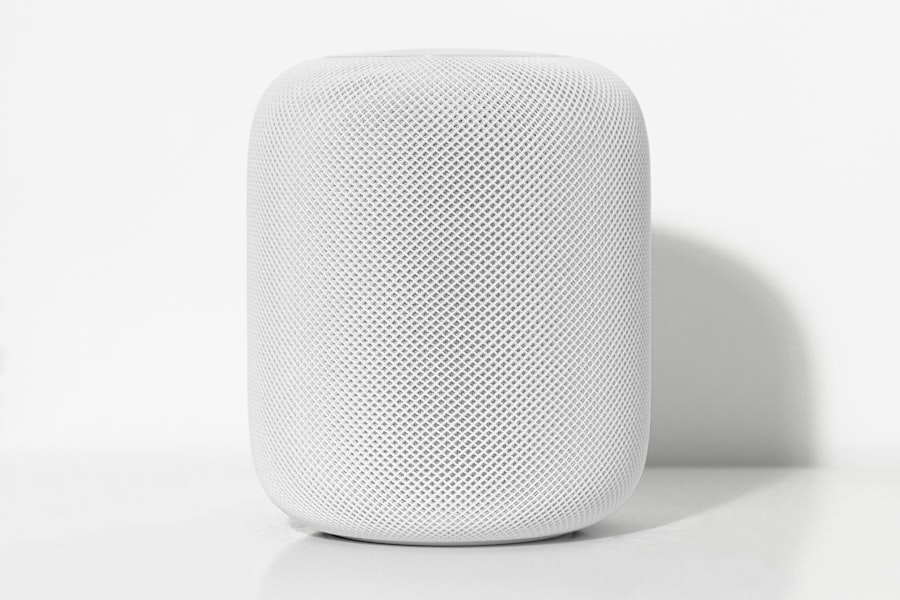As I delve into the world of smart homes, I find myself captivated by the transformative power of technology, particularly through devices like Amazon’s Alexa. This voice-activated assistant has revolutionized the way I interact with my living space, making it not just a place to reside but a hub of convenience and efficiency. The concept of a smart home, once a distant dream, is now a reality for many, including myself.
With Alexa at the helm, I can control various aspects of my home environment with just my voice, creating an atmosphere that is tailored to my preferences and needs. The integration of smart technology into our daily lives has been nothing short of remarkable. From adjusting the thermostat to controlling lights and even managing security systems, Alexa serves as a central command for my smart home.
This seamless interaction between human and machine has not only enhanced my lifestyle but has also provided me with a sense of security and comfort. As I explore the capabilities of Alexa, I am continually amazed by how this technology can simplify tasks and improve my overall quality of life.
Key Takeaways
- Alexa is a popular virtual assistant that can be used to control smart home devices
- Setting up a smart home with Alexa is easy and can be done through the Alexa app
- Customizing your smart home experience with Alexa allows for personalized voice commands and routines
- Alexa’s smart home skills can help maximize efficiency by automating tasks and managing energy usage
- Integrating Alexa with other smart home devices allows for a seamless and interconnected home automation system
Setting Up Your Smart Home with Alexa
Setting up my smart home with Alexa was an exciting journey that began with selecting compatible devices. I quickly learned that the first step was to ensure that my home was equipped with smart gadgets that could communicate with Alexa. From smart bulbs to thermostats and security cameras, I carefully curated a collection of devices that would work harmoniously together.
The process was straightforward; I simply followed the instructions provided by each device’s manufacturer and connected them to my Wi-Fi network. Once I had my devices in place, I turned to the Alexa app on my smartphone to complete the setup.
This personalization made it easier for me to issue commands later on. For instance, I could say, “Alexa, turn on the living room lights,” or “Alexa, set the thermostat to 72 degrees.” The initial setup was not only about connecting devices but also about creating a cohesive system that would enhance my daily routines.
Customizing Your Smart Home Experience with Alexa
One of the most enjoyable aspects of using Alexa in my smart home is the ability to customize my experience. I discovered that I could create routines that automate multiple tasks with a single command. For example, I set up a morning routine that starts with “Alexa, good morning.” This command triggers a series of actions: the lights gradually brighten, the coffee maker starts brewing, and the news briefing begins playing.
This level of customization has made my mornings more pleasant and efficient. Moreover, I found that I could personalize Alexa’s responses and settings to better suit my lifestyle. By adjusting preferences in the app, I could choose different voices for Alexa or even enable skills that align with my interests.
Whether it’s playing my favorite music, providing weather updates, or reminding me of important tasks, customizing Alexa has allowed me to create an environment that feels uniquely mine. The flexibility in personalization has made me feel more connected to my smart home.
Maximizing Efficiency with Alexa’s Smart Home Skills
| Metrics | Value |
|---|---|
| Energy Savings | Up to 20% |
| Time Saved | Up to 30 minutes per day |
| Cost Reduction | Up to 15% |
As I continued to explore the capabilities of Alexa, I discovered a treasure trove of smart home skills designed to maximize efficiency. These skills are essentially apps that enhance Alexa’s functionality, allowing me to perform tasks that go beyond basic commands. For instance, I integrated skills for grocery shopping and meal planning, which have streamlined my weekly routines significantly.
With just a few voice commands, I can add items to my shopping list or even find recipes based on ingredients I have at home. Additionally, I found that using Alexa’s skills for energy management has been particularly beneficial. By connecting my smart thermostat and lights to energy-saving skills, I can monitor usage and receive suggestions on how to reduce consumption.
This not only helps me save money on utility bills but also contributes to a more sustainable lifestyle. The efficiency gained through these skills has transformed how I manage my household tasks, allowing me to focus on what truly matters.
Integrating Alexa with Other Smart Home Devices
The true power of Alexa lies in its ability to integrate seamlessly with a wide range of smart home devices. As I expanded my collection of gadgets, I was thrilled to discover how well they all worked together under Alexa’s control. For example, I connected my smart security system to Alexa, enabling me to monitor my home from anywhere using voice commands.
With phrases like “Alexa, show me the front door camera,” I could easily check on things while away from home. Moreover, integrating devices like smart locks and doorbells added an extra layer of convenience and security. When someone rings the doorbell, I receive an alert on my phone and can respond through Alexa without needing to rush to the door.
This integration not only enhances my peace of mind but also allows me to manage access to my home more effectively. The synergy between Alexa and other smart devices has created a cohesive ecosystem that simplifies my life.
Voice Control and Automation with Alexa
Voice control is perhaps one of the most revolutionary aspects of using Alexa in my smart home. The ability to issue commands without lifting a finger has transformed how I interact with my environment. Whether I’m cooking in the kitchen or relaxing on the couch, I can control lights, music, and appliances simply by speaking.
This hands-free convenience has made multitasking much easier and has allowed me to maintain focus on what I’m doing. Automation is another powerful feature that I’ve come to appreciate deeply. By setting schedules for various devices, I can ensure that everything runs smoothly without constant oversight.
For instance, I’ve programmed my outdoor lights to turn on at sunset and off at sunrise automatically. This not only enhances security but also saves energy by ensuring lights are only on when needed. The combination of voice control and automation has made managing my home feel effortless and intuitive.
Troubleshooting Common Smart Home Issues with Alexa
Despite the many advantages of using Alexa in my smart home, I’ve encountered some common issues along the way. One challenge I’ve faced is connectivity problems between devices. Occasionally, a device may become unresponsive or fail to recognize commands due to Wi-Fi disruptions or software updates.
In these instances, I’ve learned that restarting the device or checking the app for updates often resolves the issue quickly. Another common issue I’ve encountered is miscommunication between Alexa and certain devices. Sometimes, when I issue a command, Alexa may misunderstand or fail to execute it correctly.
To address this, I’ve found it helpful to speak clearly and use specific phrases that align with how the device is programmed. Additionally, reviewing device settings in the app can help ensure everything is configured correctly. While troubleshooting can be frustrating at times, I’ve come to appreciate how quickly most issues can be resolved with a little patience and persistence.
Future Trends in Smart Home Technology and Alexa’s Role
As I look ahead to the future of smart home technology, I’m excited about the possibilities that lie ahead for Alexa and similar devices. The rapid advancements in artificial intelligence and machine learning suggest that voice assistants will become even more intuitive and capable over time. I envision a future where Alexa can anticipate my needs based on patterns in my behavior, making proactive suggestions that enhance my daily life.
Moreover, as more devices become compatible with Alexa, the potential for creating an interconnected smart home ecosystem will continue to grow. Innovations in areas like energy management, security systems, and health monitoring are likely to expand the role of voice assistants in our homes. As these technologies evolve, I believe that Alexa will play a pivotal role in shaping how we interact with our living spaces, making them smarter and more responsive than ever before.
In conclusion, embracing Alexa as part of my smart home journey has been an enriching experience filled with convenience and innovation. From setting up devices to customizing routines and troubleshooting issues, I’ve discovered how this technology can significantly enhance my quality of life.
If you’re looking to boost your laptop’s performance, you may want to check out this article on how to boost your laptop’s performance. It provides tips and tricks to help optimize your laptop’s speed and efficiency. Additionally, if you’re in the market for a new laptop, you may find this laptop buying guide helpful in making an informed decision. And if you’re interested in connecting your AirPods to your Dell laptop, this article on connecting AirPods to a Dell laptop may be just what you need.
FAQs
What is Alexa?
Alexa is a virtual assistant developed by Amazon, capable of voice interaction, music playback, making to-do lists, setting alarms, streaming podcasts, playing audiobooks, and providing weather, traffic, sports, and other real-time information.
How does Alexa work?
Alexa works by using natural language processing to understand and respond to voice commands. It uses a combination of machine learning and artificial intelligence to continuously improve its ability to understand and respond to user requests.
What devices can Alexa be used on?
Alexa can be used on a variety of devices, including Amazon Echo smart speakers, Fire TV, Fire tablets, and a range of third-party devices such as smart TVs, smart home devices, and even some cars.
What can Alexa do?
Alexa can perform a wide range of tasks, including playing music, setting reminders, controlling smart home devices, providing weather and traffic updates, answering questions, and even ordering products from Amazon.
Is Alexa always listening?
Alexa is designed to only listen for its wake word, which is typically “Alexa” by default. Once the wake word is detected, Alexa starts recording and processing the voice command. Users have the option to review and delete voice recordings through the Alexa app.
Can Alexa be used to make phone calls?
Yes, Alexa can be used to make phone calls to other Alexa devices, as well as to regular phone numbers through the Alexa app or compatible Echo devices with a screen.
Get more stuff like this
Subscribe to our mailing list and get interesting stuff and updates to your email inbox.
Thank you for subscribing.
Something went wrong.




